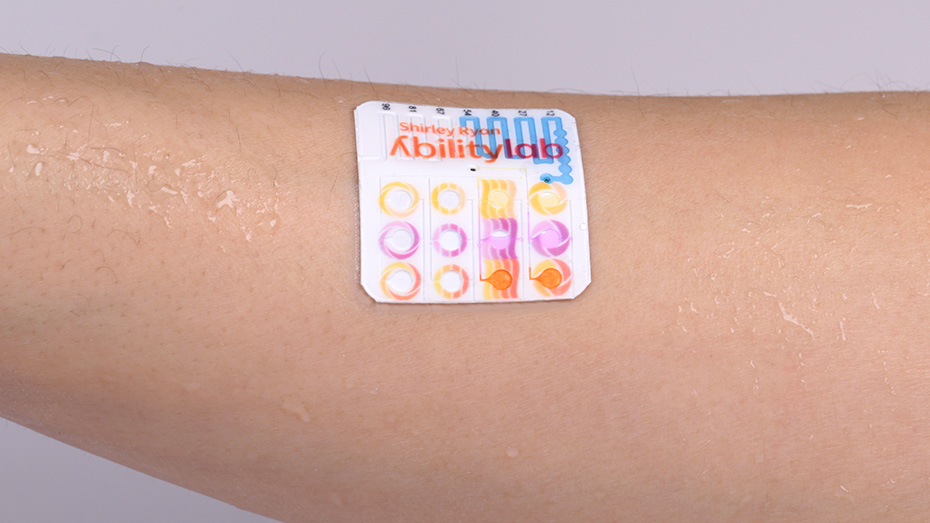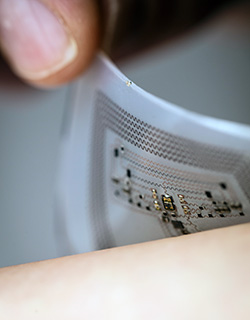Out of the Lab and into the Market
INVO helps make Northwestern technologies available to the public

There are many devices, compounds, and technologies that could improve society. But only those that make it out of the lab and into the market will ever be able to make a difference.

Take John Rogers’ wearable microfluidic device, for example. The soft, flexible patch can monitor sweat rate and electrolyte loss in order to alert its wearer when it’s time to hydrate. The device could particularly improve performance for military personnel, athletes, and fitness pros who need to replenish electrolytes strategically in order to stay on top of their game.
Members of Rogers’ laboratory made early models of the novel device — one patch at a time. The painstakingly detailed and slow process was neither efficient nor cheap enough to meet the needs of its end users. That’s when Rogers realized that it was time to reach out to Northwestern’s Innovation and New Ventures Office (INVO).
“INVO helped us spin out a company called Epicore Biosystems,” said Rogers, the Louis Simpson and Kimberly Querrey Professor of Materials science and Engineering, Biomedical Engineering and Neurological Surgery. “Then they helped move the technology into the company.”
Not long after INVO and Rogers established Epicore Biosystems, the company launched large volume manufacturing capabilities for the microfluidic devices. The outsourced manufacturing flow quickly makes hundreds of low-cost, disposable devices for deployment throughout the nation and enabled Rogers’ team to send hundreds of devices to the Seattle Mariners Major League Baseball team and Wright-Patterson Air Force Base for testing in the field.
A crucial part of Northwestern’s innovation ecosystem, INVO works with researchers like Rogers to move Northwestern technologies to the marketplace. INVO’s team first gives inventors and entrepreneurs a top-level road map for protecting their intellectual property and planning a startup and then helps them navigate the route.
We have developed an infrastructure at Northwestern to ensure that the most promising innovations are translated into useful products that can benefit the public.”
Alicia Löffler,
Associate Vice President for Research, and Executive Director of INVO
INVO also offers resources such as coaching and mentorship programs as well as online quick-reference guides to guide researchers through the invention disclosure and commercialization process. Through these resources and a supportive culture, INVO makes the complicated, often confusing process transparent, efficient, and interactive.
“We have developed an infrastructure at Northwestern to ensure that the most promising innovations are translated into useful products that can benefit the public,” said Alicia Löffler, associate vice president for research, and executive director of INVO. “This includes resources and mentorship programs, such as the development of centers devoted to translation, proof-of-concept funding for promising technologies, translational fellows and entrepreneur-in-residence programs, target mentorship programs and supportive terms for startups.”